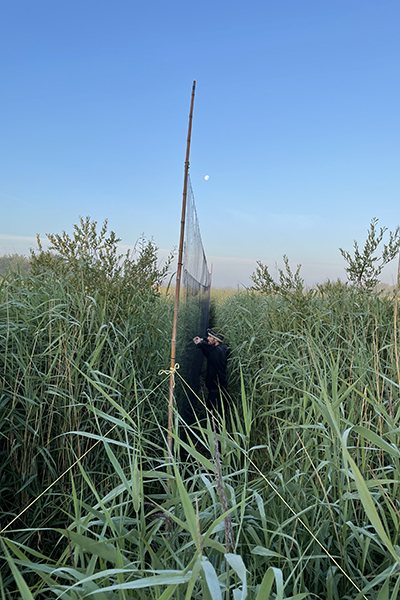Constant Effort Sites (CES) have been around for awhile. I don't run one myself as most of my passerine ringing is done on Hilbre or in my garden. The BTO have recently introduced garden CES's so its something I'm considering in the future. The idea is you ring at the same site for a number of consecutive weeks using the same nets and ringing for the same length of time. The data collected allows for a year on year comparison of breeding success, populations and survival. I've helped out at several CES sits including the one at Catterick army garrison - see here, here and here for blog posts on some of my previous trips.
I'd recently been asked to help with a CES site on Anglesey whilst Steve & Rachel were away. Its a reed bed site with good numbers of breeding Sedge & Reed Warblers. Between four of us we got an agreed date when we could all attend so with my alarm set for stupid o'clock I headed off in the dark for the 70 mile drive to our meeting point where I met up with fellow insomniacs Rosie, Tom & Sam. We had a map showing net locations and Rosie had collected all the ringing gear the previous evening. After a bit of fumbling around in the dark on uneven ground we managed to get the ten mist nets set and started catching birds almost immediately.
 |
| Tom extracting from a reedbed mistnet |
I haven't ringed many Reed or Sedge Warblers since I started out as a trainee in the 70's at Wicken Fen so it took a bit of time to get my eye and brain working. Sedge Warblers undergo their post juvenile moult after migrating so any young bird we caught would be designated a 3J denoting a bird of the year that still hadn't grown its belly feathers or a 3 if it had! Sedge Warblers tend to grow all their feathers fairly quickly. At 05.00 in the morning, after being up since 01.00 there's already a certain amount of brain fatigue to contend with whilst trying to remember the intricacies of Sedge Warbler moult!
We had a great morning though with 98 birds of 7 species being caught and processed. Highlights were a French controlled (already ringed by a French ringer either in France or somewhere in Africa!) Sedge Warbler, the first Kingfisher I'd seen in the hand since catching two in an industrial unit in 2014 - see here for that story - several Cetti's Warblers and several Grasshopper Warblers.
 |
| French controlled Sedge Warbler. |
Kingfishers are one of my favourite birds. I wrote an article about a nest I'd found and watched whilst a 12 year old kid in Suffolk for the RSPB's YOC (young ornithologists club) magazine. This one was aged as a juvenile female by the slight orange tinge to the lower mandible. It was a ringing tick for Tom and a lovely one at that. The old English name for Kingfisher is Halcyon and it was certainly a halcyon day as the weather started warming up considerably! Running around in Wellington boots with waterproof trousers over the top certainly got a sweat on.
Cettis Warblers are unique among British passerines as they only have 10 tail feathers compared to the usual12. Something this Cetti's showed brilliantly in the hand.
By 10 am we'd finished the CES and with the sun now getting hotter we packed everything away and headed home.



































































